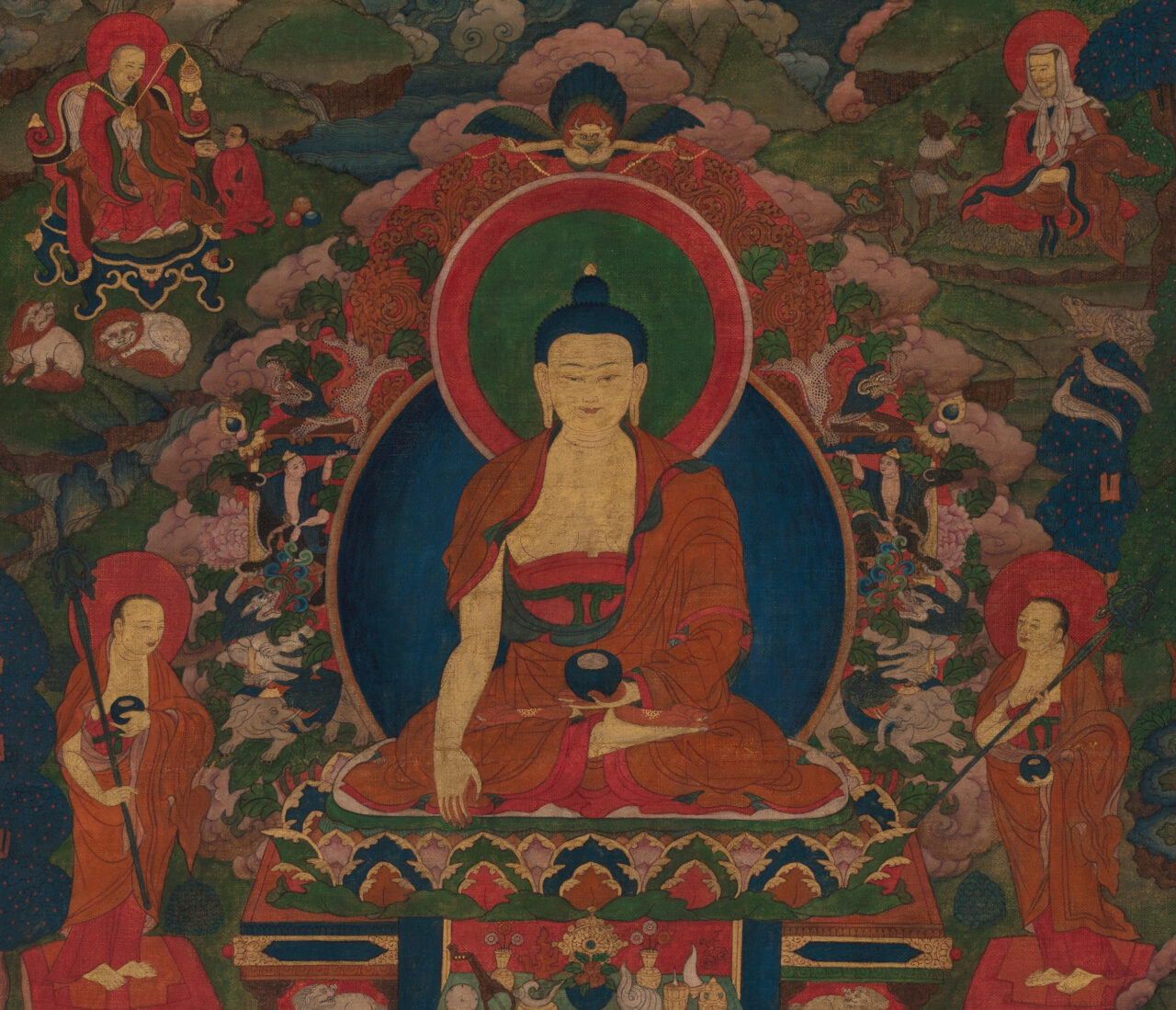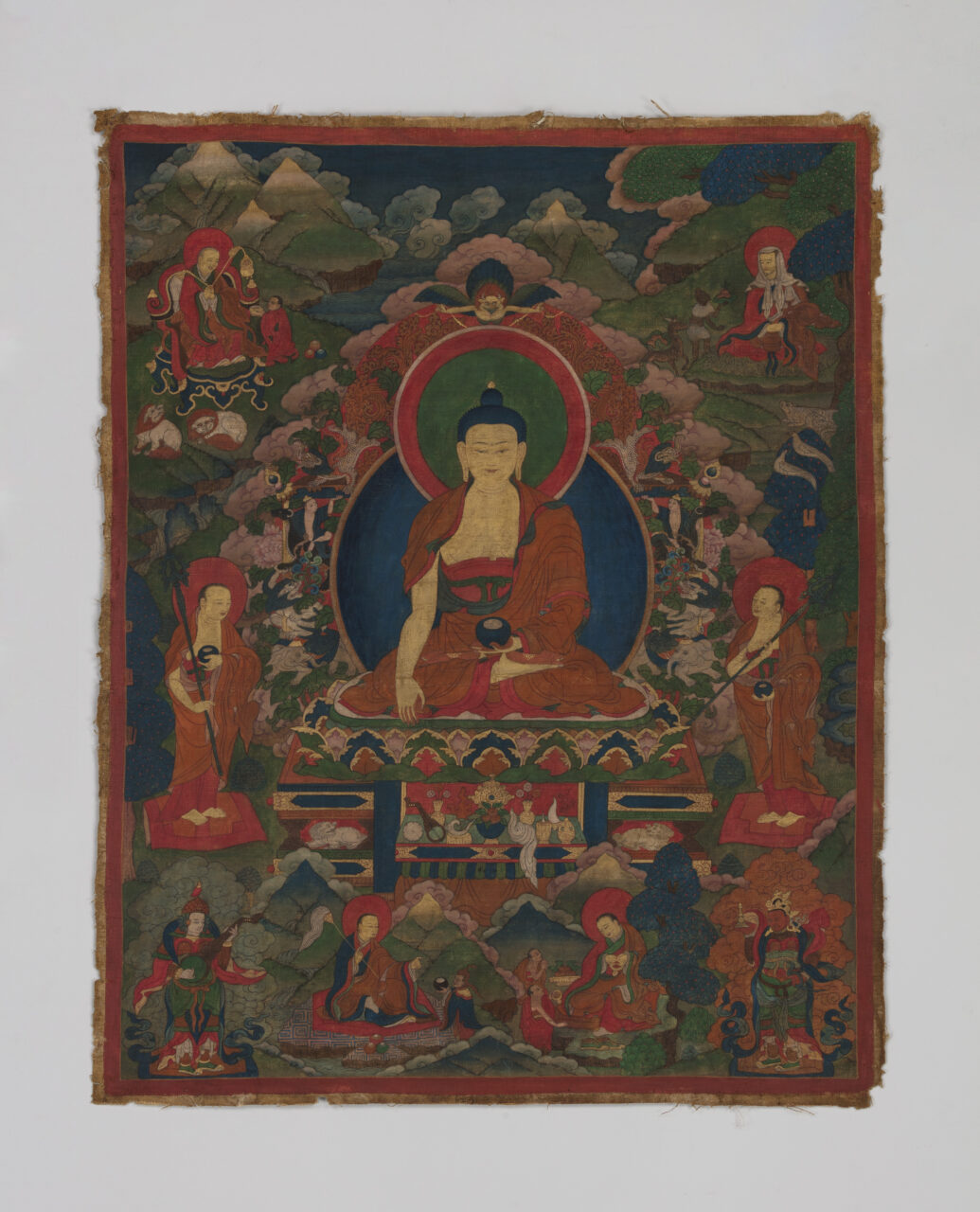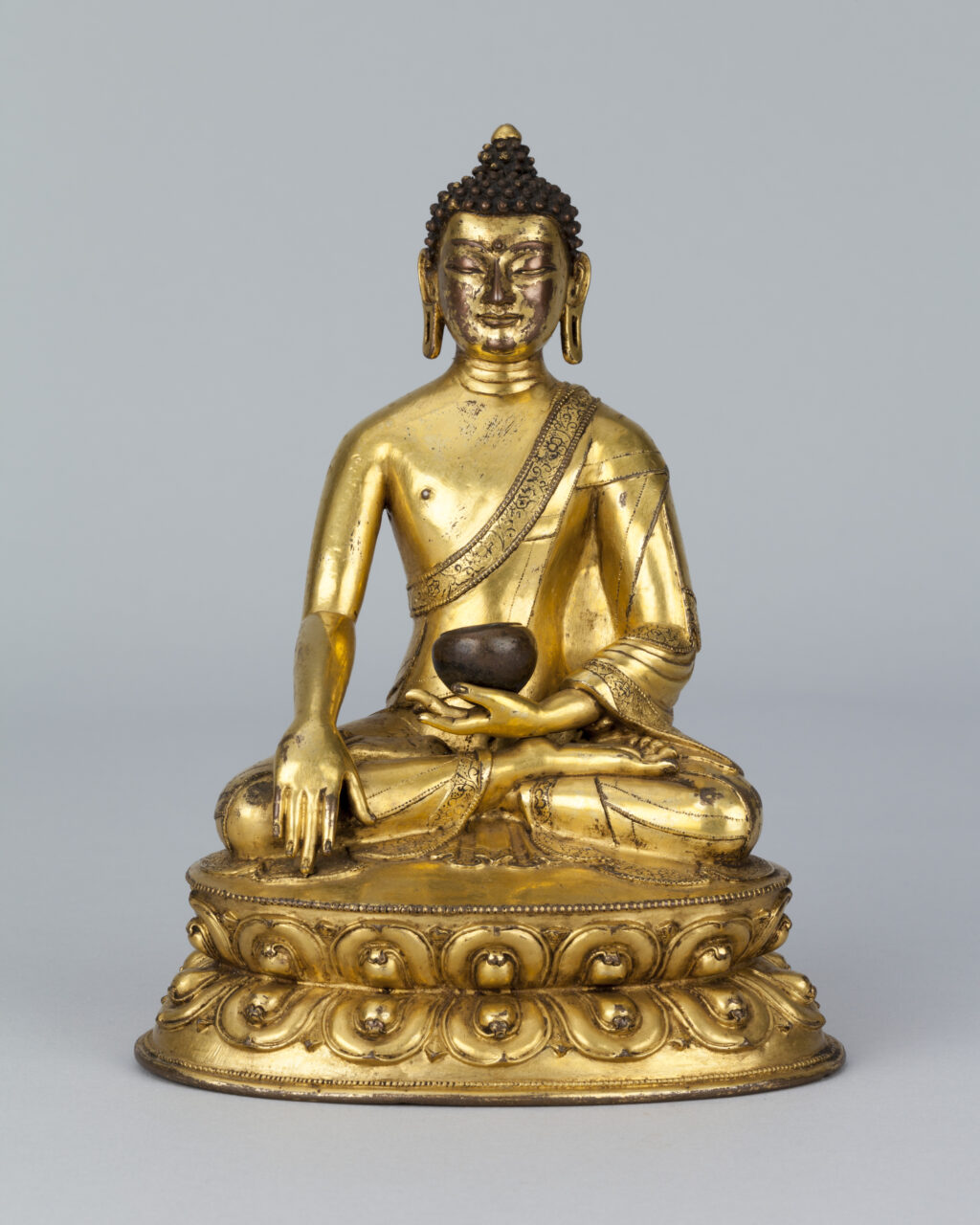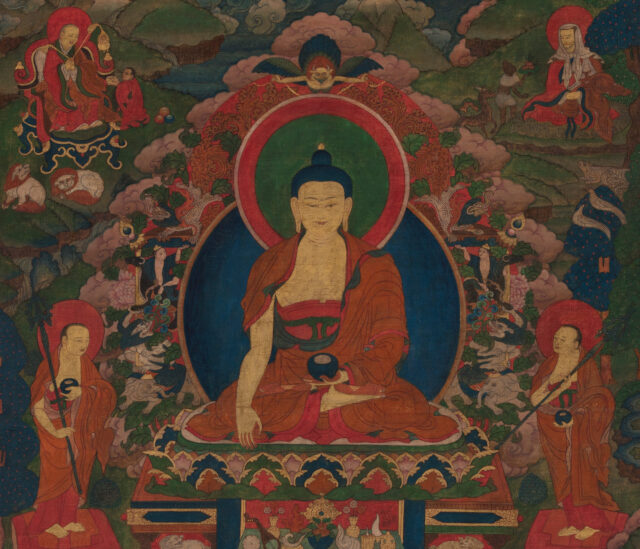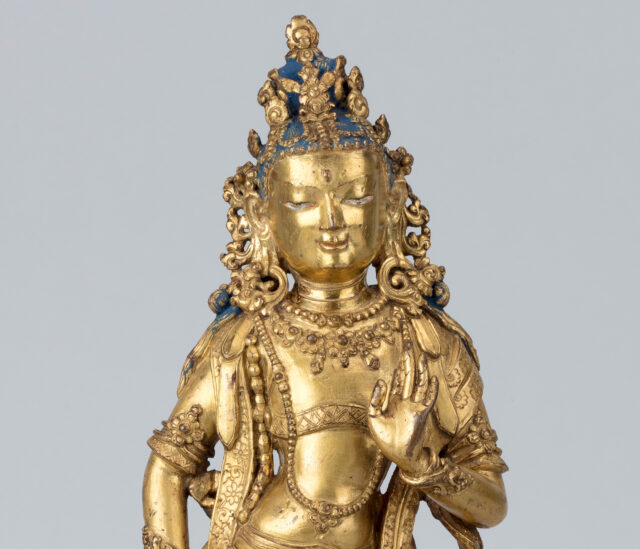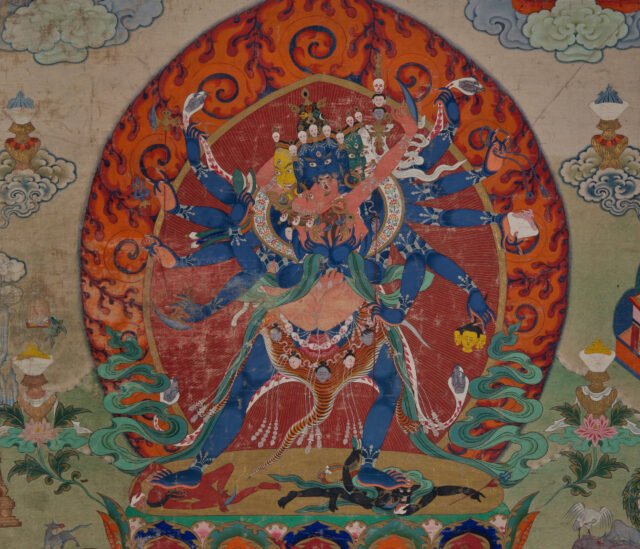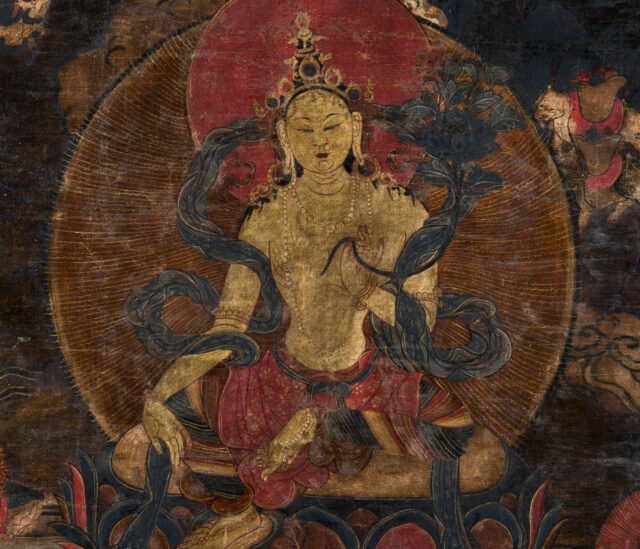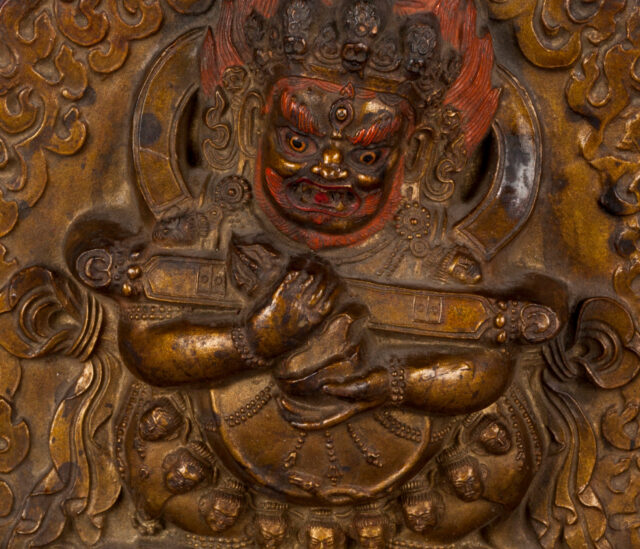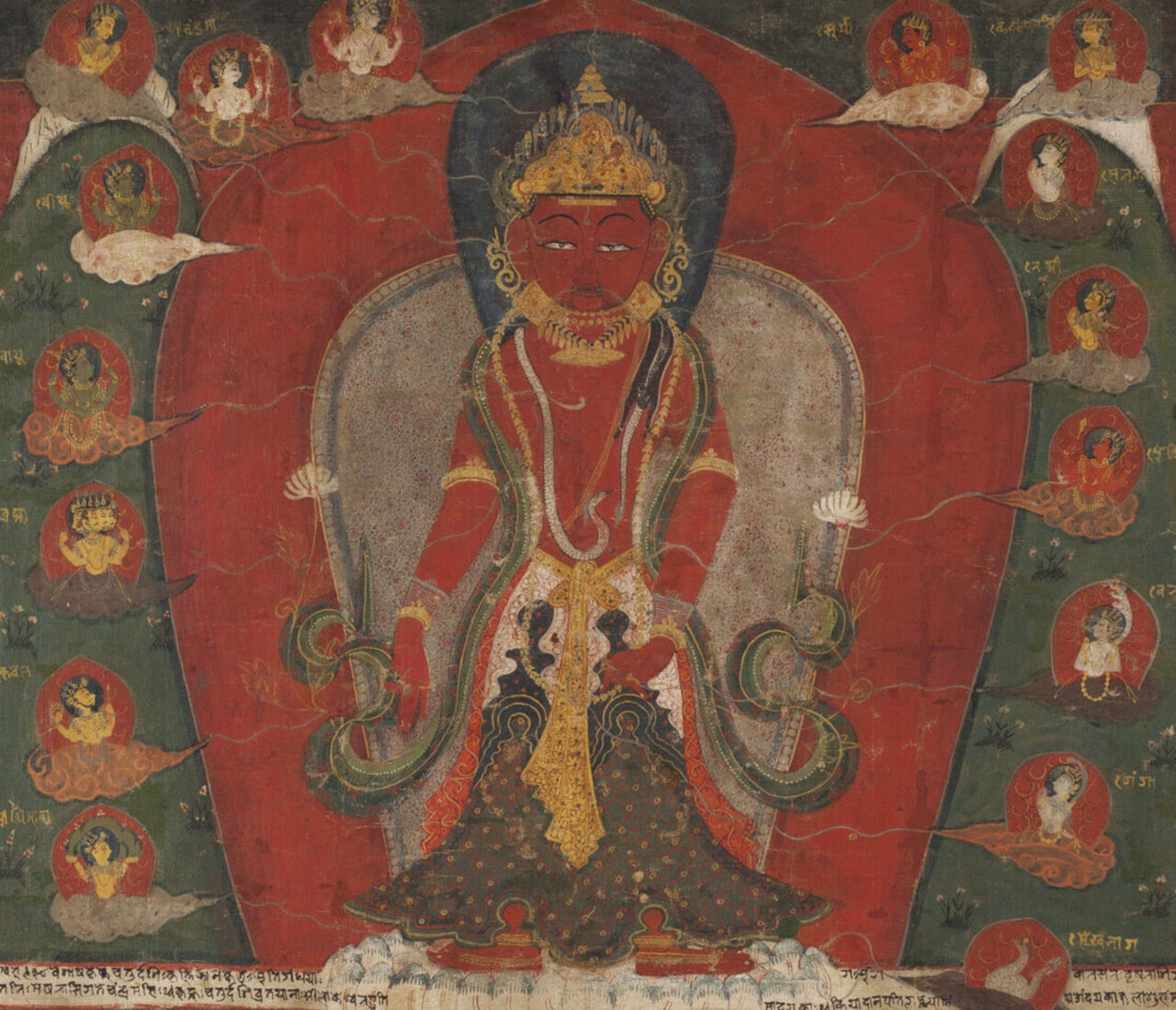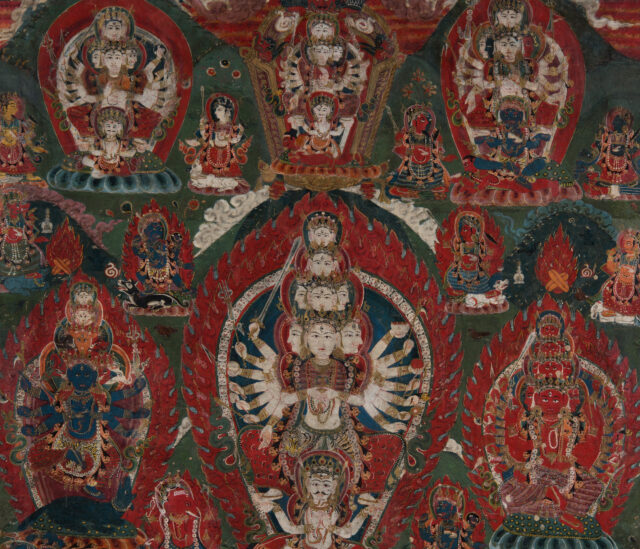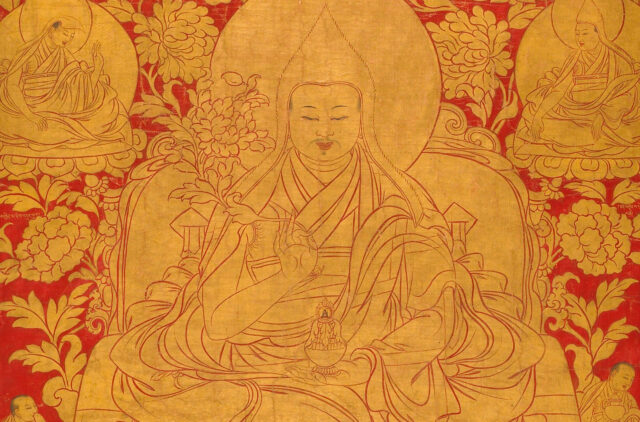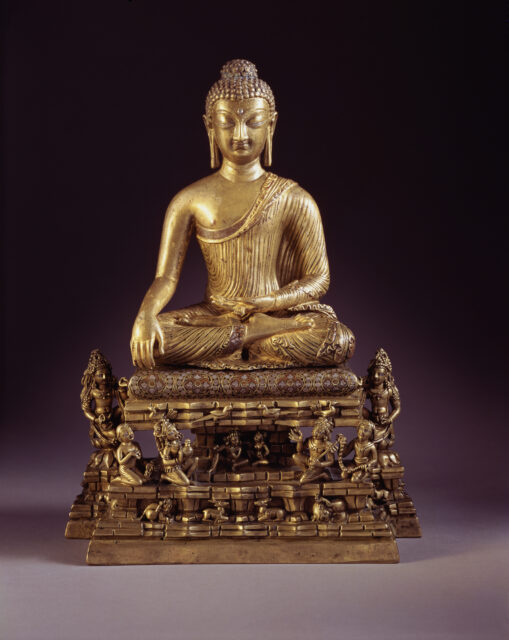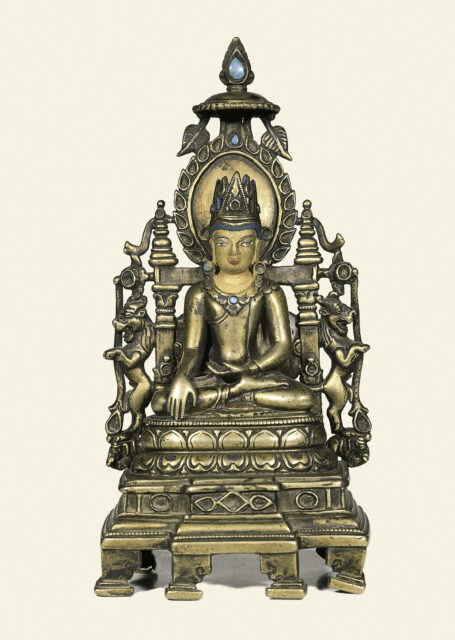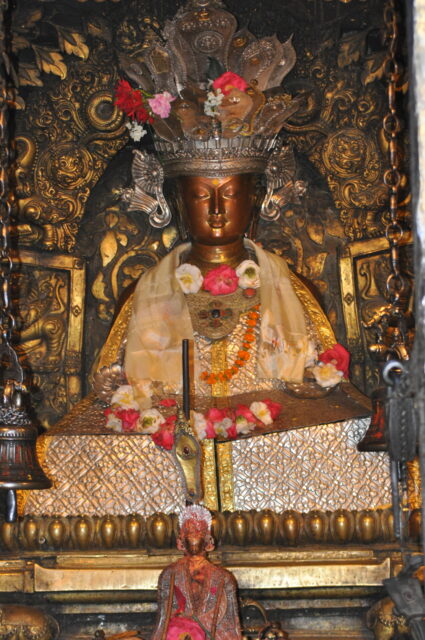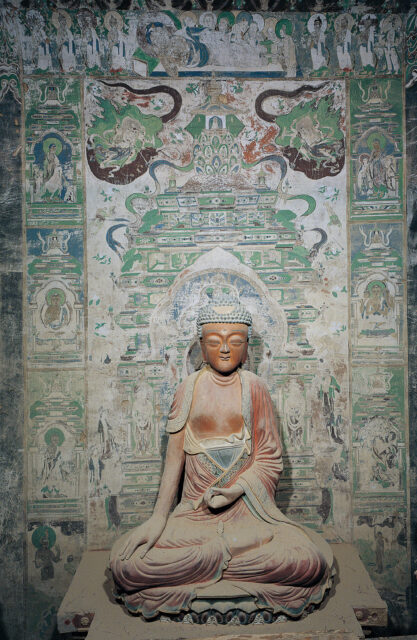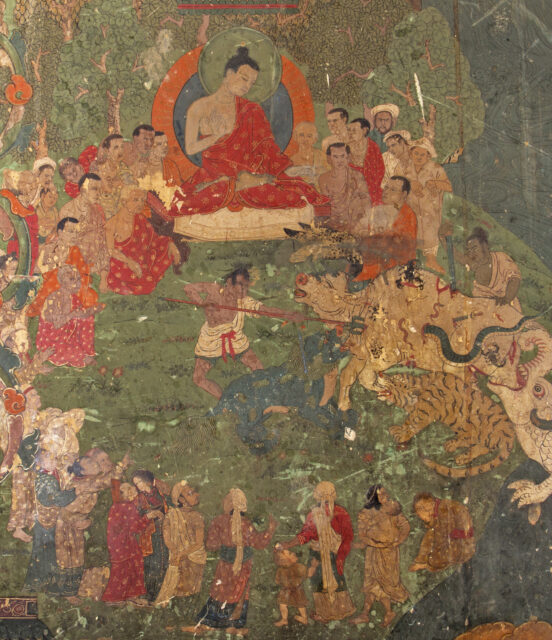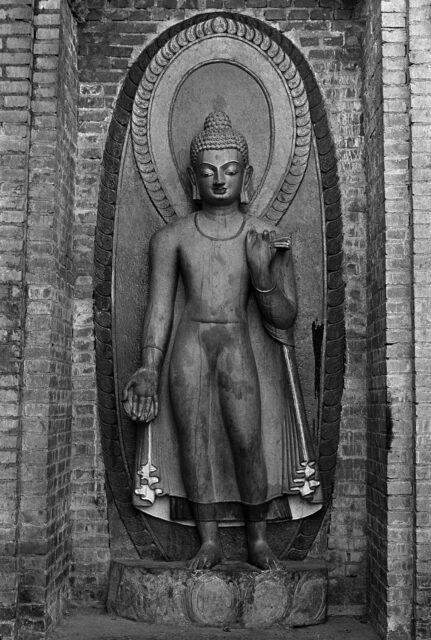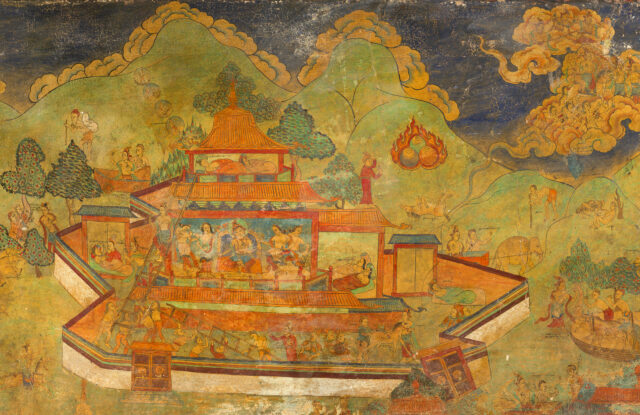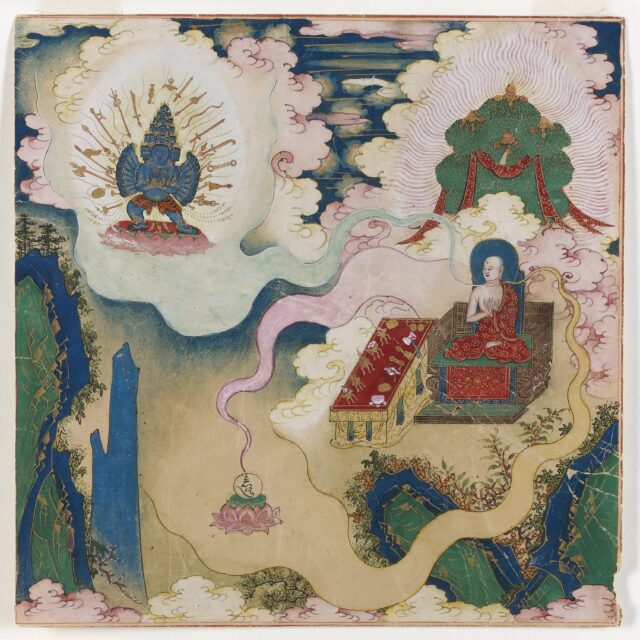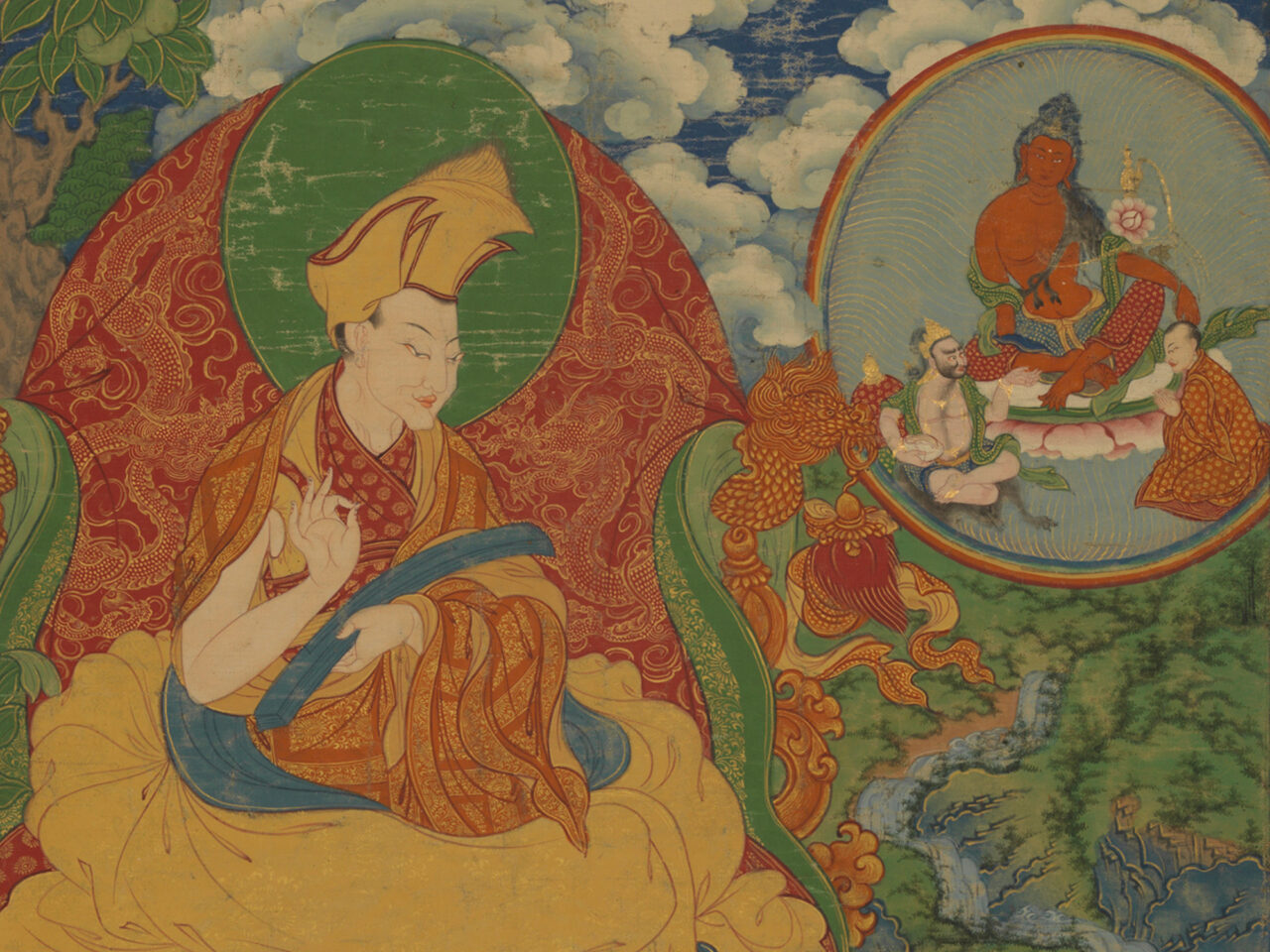The Buddha, meaning awakened person, referred first to Shakyamuni, who lived and taught sometime between the sixth and fourth century BCE in northcentral India.
His teachings became the foundation of Buddhism. By understanding the true nature of reality, Shakyamuni became awakened, free from the cycle of suffering that is birth, death, and rebirth. Buddhist philosophy and practices later expanded the idea of awakening to include buddhas of the past and the future, as well as tantric buddhas who can manifest in various forms.
Buddhas are usually depicted with the marks of a great being, such as a cranial protuberance (ushnisha), tuft of hair between the eyebrows (urna), and long earlobes. They often wear monk’s robes and display symbolic gestures (mudras) with their hands. These gestures and poses refer to life episodes or stories of teachings. The Buddha sitting cross-legged, with one hand touching the ground, signifies the moment prior to his awakening. Both hands forming a wheel at the chest represents teaching. Standing buddhas typically display the gesture of granting blessings or protection. Each one carries its own meaning.
